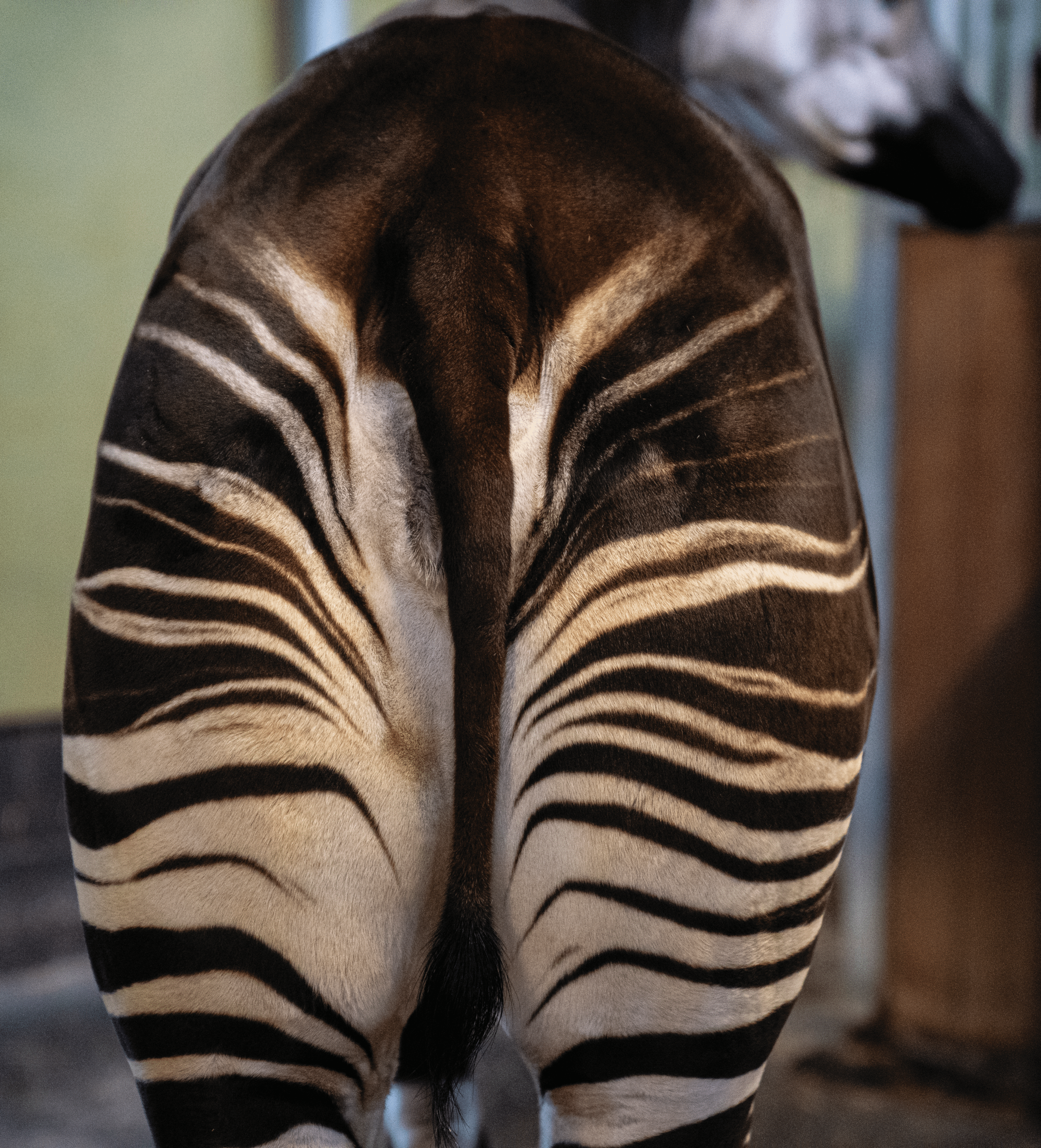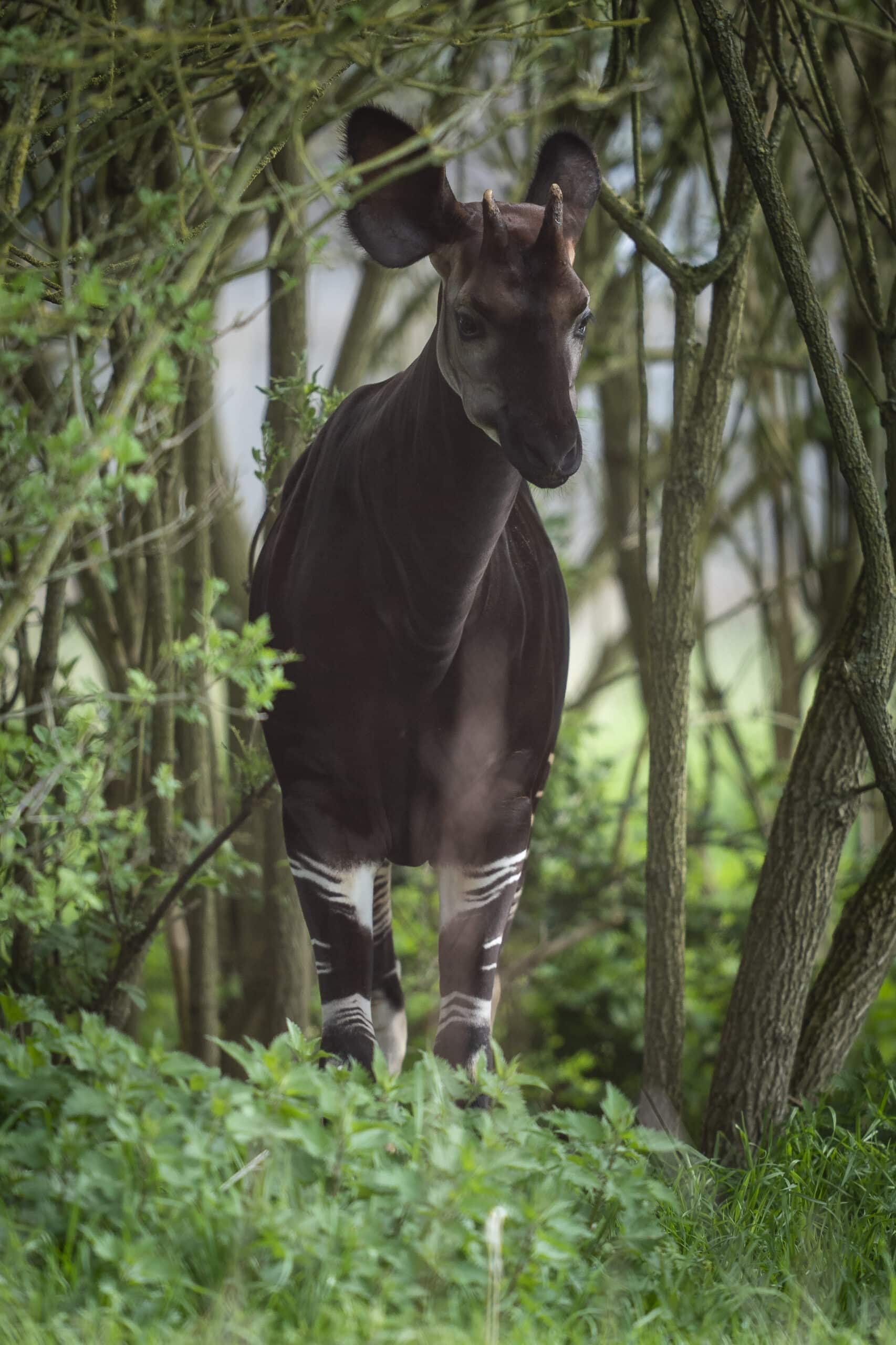Keeper Diary – Georgie and Zoe, Hoofstock
January 7, 2024
January 7, 2024
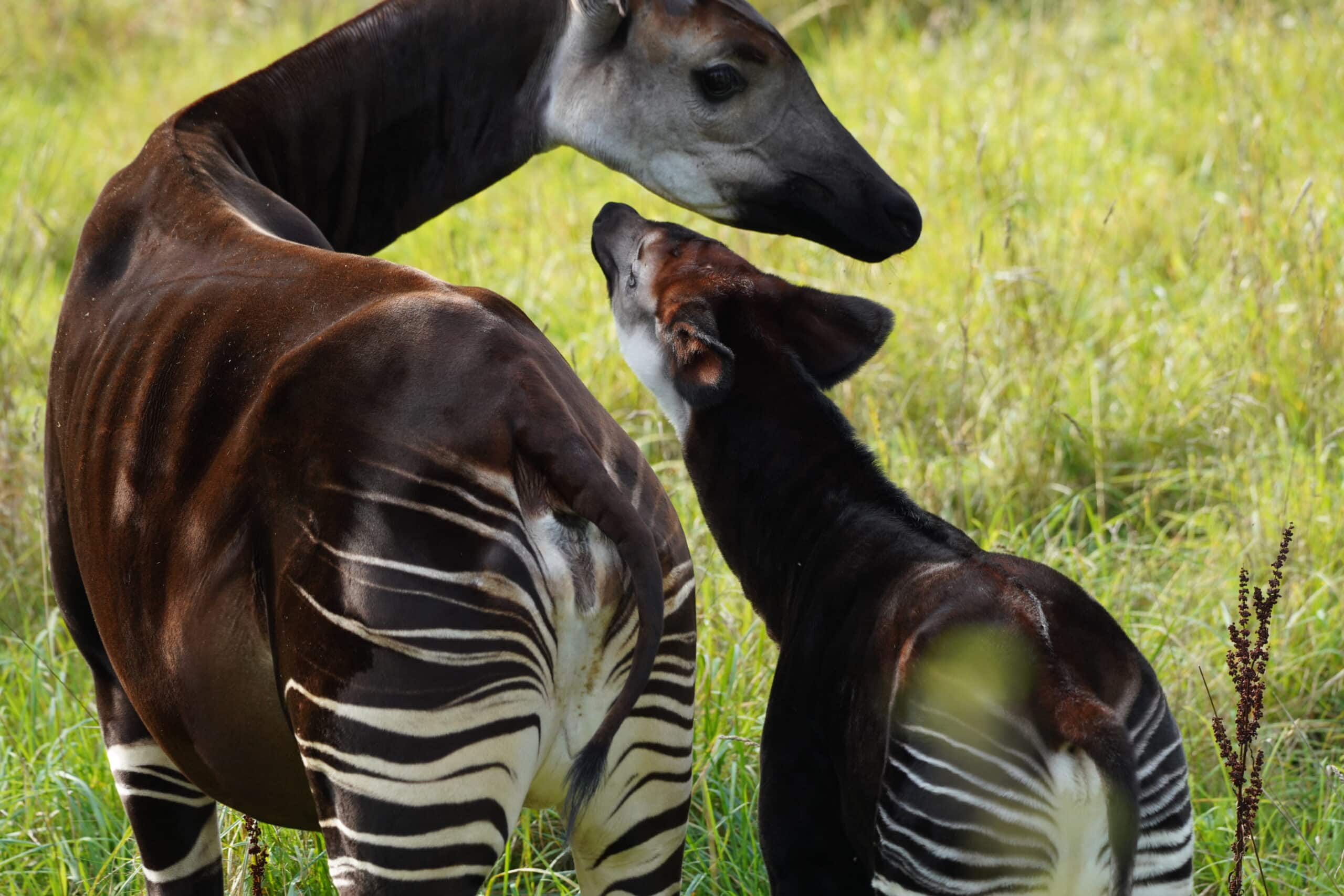
Hi there Marwell supporters,
We’re Georgie and Zoe from the Hoofstock section! We’re two of the many zookeepers here at Marwell Zoo and we thought it would be nice to share a little insight into our day-to-day lives at the park.
Get ready for an exclusive look at the Hoofstock section. We’ll show you keeper photos, fascinating facts that all keepers’ heads are full of, and we’ll show you our general everyday responsibilities.
You may have heard, back in July 2023 we welcomed a special new arrival at the park, an okapi calf.
The whole team were incredibly excited prior to the birth! After 14 long months of waiting, on 21 July 2023 just after 4am, female okapi calf Nkutu was born to mother, Daphne.
Nkutu was named by keepers after an area in the Democratic Republic of the Congo – the only place in the world you can find wild okapi.
Preparing for the arrival
Prior to our newest okapi addition arriving we needed to prepare the stalls to make sure they had a safe space. We prepare something called a creep/nest.
A creep/nest is a little den and a safe space the calf stays in for the majority of the first 30 to 40 days of their life, only getting up to feed from their mother, as this is what would naturally happen in the wild. Much like deer, okapi calves hide away from predators, staying as still as possible.
Whilst sat in this creep/nest they have a special adaptation: they don’t poo for the 40 – 60 days of their life, so they are not detected by potential predators.
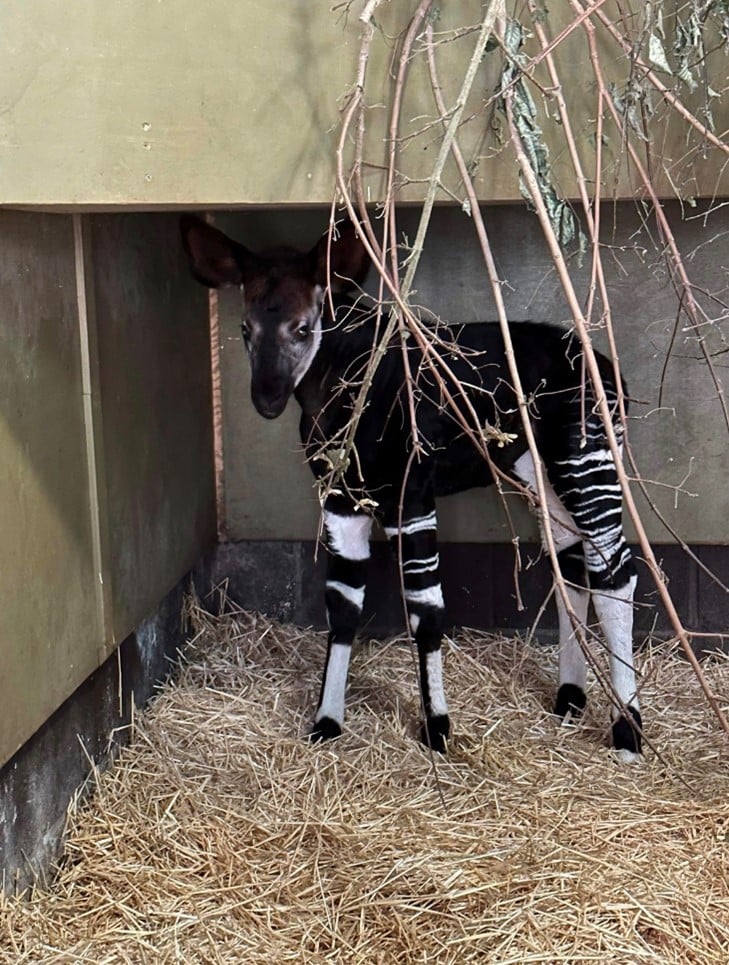
The first few weeks
For the first week, we left Daphne and calf to bond, checking in every few hours to make sure the calf was suckling correctly and feeding well.
Zoe was the first to try and create a bond with the calf, she would go and sit in the stall with them and chat away to get them used to her and her voice. After a week or two she had success and the calf approached her! Being able to work closely with individuals makes things such as training and veterinary interventions much easier and less stressful for them (and us).
Nkutu is taking after her dad, Nuru in how confident she already is.
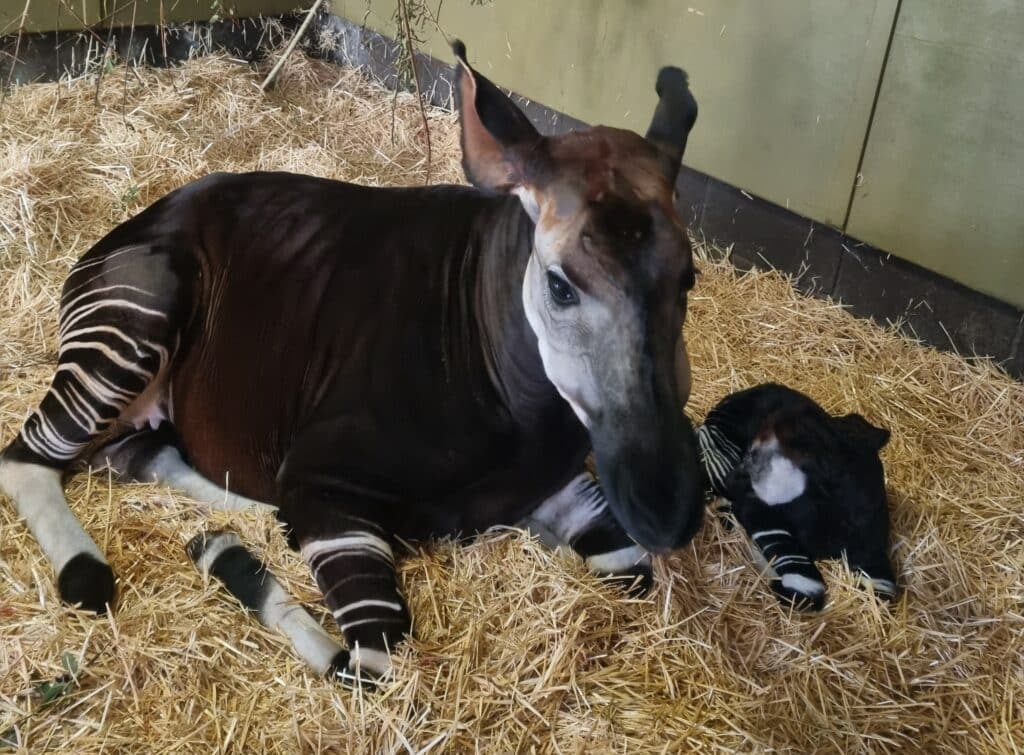
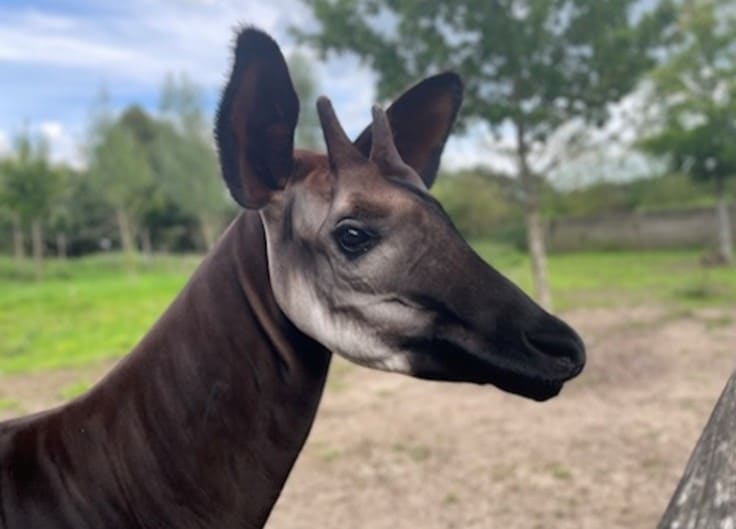
Fun facts
Okapis are unusual animals with some wonderful unique quirks…
• The stripes they have on their bottoms are just like our thumbprints – completely unique to the individual and one way we can tell the okapis apart.
• Their stripes help them blend in, so in the wild they can almost camouflage themselves away from the eyes of predators.
• Speaking of their stripes, a lot of people think that okapis have them because they are part zebra, but this is not true. Their closest relative is actually the giraffe!
• If you look at their heads, they do resemble a giraffe but one difference is that in giraffe both male and females have ossicones (skin-covered bone structures on their heads) whereas only male okapis have them (picture 5).
•Okapis have a tongue 30cm in length – they can lick their own eyeballs.
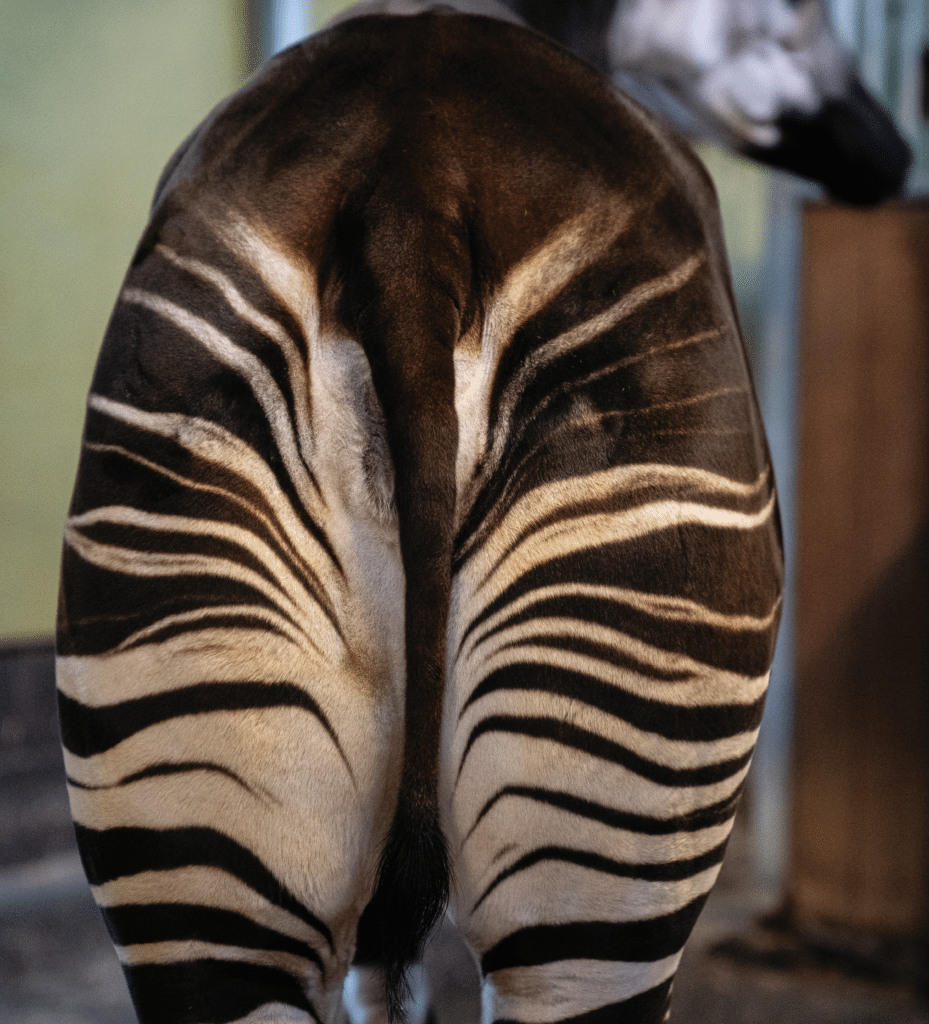
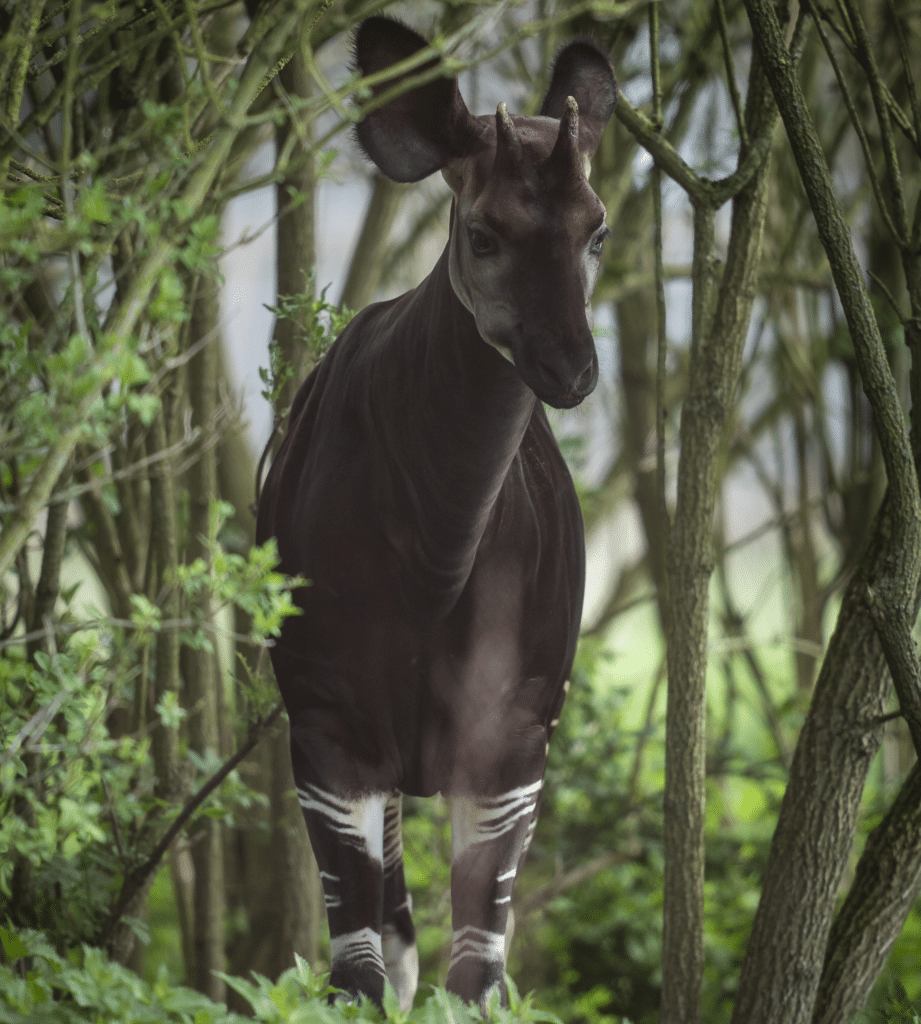
These magnificent animals are currently listed as Endangered on the IUCN Red List of Threatened Species. They are only found in the Democratic Republic of the Congo.
They are so rarely seen in the wild, that the population is estimated to be just 3,000 to 10,000 animals – which is why zoos and breeding programmes such as the one Nkutu is a part of are crucial for the species’ survival!
Having this new calf has been amazing news for the future of the species and the Hoofstock team. Being able to watch the calf’s fun and energetic personality come through while increasing our knowledge on how to care for these amazing animals is something none of us take for granted.
You can visit Nkutu, mother Daphne and the rest of the herd in the okapi house near the tigers.
We hope you’ve enjoyed reading our first blog and look forward to seeing you all around the park soon.
Keeper Georgie & Keeper Zoe
